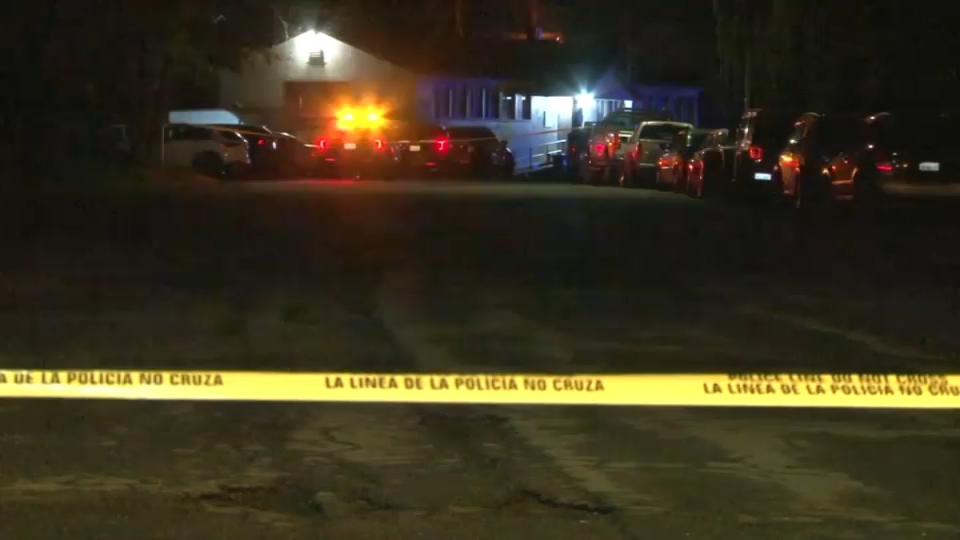Eighteen-year-old Tyler Clementi typed his intention to millions on the Internet: "Jumping off the gw bridge sorry." His body was found days later floating in the Hudson River beneath the George Washington Bridge.
Chef Joseph Cerniglia, a contestant on the reality cooking show "Kitchen Nightmares," also jumped from the iconic bridge in the past two weeks. His restaurant was mired in debt, though beginning to make a comeback.
In March, Yale University student Cameron Dabaghi jumped from the Empire State Building's 86th-floor observation deck. He had written a note beforehand saying he was sorry and would be jumping from either the George Washington Bridge or the totemic skyscraper.
Those who choose to end their lives in public, dramatic fashion often pick landmarks -- from the George Washington Bridge overlooking Manhattan and the Palisades, to the Golden Gate Bridge, with its sweeping views of the Pacific Ocean and the San Francisco Bay.
Authorities are looking at how to prevent the public deaths with everything from concrete barriers, suicide hot line phones or safety nets hanging from bridges.
The measures would have made a difference for Kevin Hines, who survived a leap from the 746-foot Golden Gate Bridge in 2000.
"I would never have jumped off that bridge" if he found obstructions in the way, he said.
Local
In New York, few city landmarks with the potential to become suicide hot spots are as accessible as the George Washington Bridge, which has a pedestrian path and a low railing.
The Empire State Building has a 10-foot-high safety fence and an abundance of security guards, but more than 30 people have leaped from it to their deaths since it opened in 1931. The Brooklyn Bridge, which also has seen fatal jumps this year, has an easy-to-get-to pedestrian walkway, but it hangs over lanes of vehicle traffic rather than water.
New York City police responded to over 640 reports of people either jumping or threatening to jump from buildings or bridges as of Aug. 31, NYPD spokesman Paul Browne said -- a 27 percent increase over the same period last year.
The police have officers trained to talk down and grab would-be jumpers and deploy air bags in the streets to catch people threatening to jump from buildings.
A dozen telephones are installed along the pedestrian walkways on the George Washington Bridge that patch potential jumpers through to suicide hot lines. The phones are near signs that say, "Need help?" in both English and Spanish.
Dr. John Draper, project director of the National Suicide Prevention Hot Line in New York, says a simple concrete barrier is a much better suicide deterrent on a bridge than a telephone.
"We've seen on bridges that people don't really call hot lines in high numbers," he said.
The Port Authority of New York and New Jersey, which owns the bridge, would not release information on the number of people who have jumped from the span, saying it's impossible to determine the exact count. But Port Authority spokesman Steve Sigmund said the agency is "continuing to partner with mental health experts to further strengthen" it prevention efforts.
Psychologists who study suicide say the landmarks can become attractive ways out for emotionally disturbed people wanting to die.
"When they think about dying in this way, they may have some degree of magical thinking, knowing that it is very likely their death will get publicity and media attention," said Dr. Alan L. Berman, executive director of the Washington-based American Association of Suicidology.
Hines, now 29, who suffers from bipolar disorder, told The Associated Press that he had believed the jump would be less painful than other forms of death, and less frightening than taking pills. He decided after doing research on the Internet that "the only option was a bridge."
By conservative estimates, 1,300 people have jumped to their deaths from the Golden Gate Bridge since it opened in 1937. At least 29 people leaped last year, and eight have committed suicide there through July this year, according to bridge officials. Transportation authorities voted two years ago to hang stainless steel nets from the bridge to deter suicides, although funding for the $50 million project remains elusive.
Most jumpers suffer a grisly death, with massive internal injuries, broken bones and skull fractures. Some die from internal bleeding. Others asphyxiate from drowning.
Hines said his leap was anything but painless.
"This image that you just free-fall into an abyss is just a joke," he said.
Draper, of the suicide hot line network, said that popular opinion aside, research shows that barriers making the jumps from high places impossible will prevent the public suicides.
"Many people are under the impression that if you just put up a barrier they will find another way to kill themselves. It's an argument that people will make against putting up a barrier," Draper says. "And it's myth."



